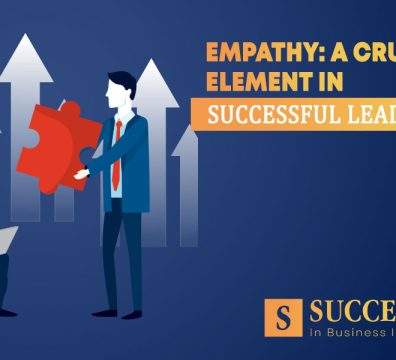How to succeed in business?
In the competitive realm of business, success is the ultimate prize. But what does it take to conquer this challenging terrain and emerge victorious? This article distills the essential components of business success, offering a concise roadmap for entrepreneurs and business leaders alike. From vision and innovation to financial management and customer-centricity, these fundamental pillars hold the keys to achieving lasting success in the dynamic world of commerce. Join us as we embark on a journey through the core principles that drive businesses toward their goals, fostering growth and resilience in an ever-changing landscape.
1. Clear Vision and Mission:
A clear vision and mission are fundamental components of a business’s identity and strategy. They provide purpose, direction, and a shared sense of values to guide the actions and decisions of the organization. Let’s delve deeper into each of these concepts:
| Vision | Mission | |
| Definition | A vision statement is a concise, forward-looking statement that describes the long-term aspirations and goals of the business. It outlines what the company hopes to achieve and become in the future. | A mission statement is a brief, succinct statement that outlines the fundamental purpose of the business, who it serves, and what it does. It is a more concrete and short-term expression of the organization’s core purpose. |
| Purpose | The vision statement sets the overall purpose and destination of the business. It answers the question, “Where do we want to be in the future?” It provides a unifying goal that inspires and motivates everyone within the organization. | The mission statement defines the essential reason for the business’s existence. It clarifies its focus, the markets it serves, and the primary activities it undertakes to fulfill its vision. |
| Characteristics | A good vision statement is aspirational, clear, memorable, and easy to understand. It should be ambitious yet attainable and should reflect the organization’s core values and aspirations. | A well-crafted mission statement is specific, actionable, and aligned with the company’s values. It should communicate the “what” and “how” of the organization’s operations and its commitment to stakeholders. |
| Example | Tesla’s vision statement is “To create the most compelling car company of the 21st century by driving the world’s transition to electric vehicles.” | Google’s mission statement is “To organize the world’s information and make it universally accessible and useful.” |
2. Market Research:
Market research is a crucial process that involves the systematic gathering, analysis, and interpretation of data and information about a particular market or industry. It provides valuable insights into consumer behavior, industry trends, and competitive landscapes. Here are key aspects to consider when discussing market research:
1. Purpose of Market Research:

- Market research is conducted to make informed business decisions. It helps you understand your target market, identify opportunities, and minimize risks.
2. Types of Market Research:
- There are two main types of market research:
- Primary Research: This involves collecting new data directly from sources, such as surveys, interviews, and focus groups.
- Secondary Research: This involves analyzing existing data, such as industry reports, competitor information, and publicly available statistics.

3. Unique Value Proposition:
The Unique Value Proposition (UVP), also known as the Unique Selling Proposition (USP), is a critical element in marketing and branding. It’s a concise statement that communicates the unique benefits and value that your product or service offers to your target audience. Let’s delve deeper into the concept of a Unique Value Proposition:
1. Definition:
- A Unique Value Proposition is a clear and compelling statement that explains what sets your product or service apart from the competition. It communicates the unique benefits and value that customers can expect when choosing your offering.
2. Purpose:
- The primary purpose of a UVP is to differentiate your business from competitors in the eyes of your target audience. It answers the question, “Why should a customer choose your product or service over alternatives?”
3. Key Elements of a UVP:
- A well-crafted UVP typically includes the following elements:
- Unique: It highlights what makes your offering distinct and one-of-a-kind.
- Value: It communicates the specific benefits and advantages customers will gain.
- Proposition: It presents a clear and compelling offer or promise to the customer.
4. Solid Business Plan:
A solid business plan is a foundational document that outlines the goals, strategies, and operational details of a business. It serves as a roadmap for entrepreneurs and business owners, helping them clarify their vision, make informed decisions, secure funding, and navigate the challenges of running a successful business. Here’s a more detailed look at the elements and significance of a solid business plan:
1. Executive Summary:
- This is a concise overview of the entire business plan, summarizing key points such as the business concept, goals, market opportunity, financial projections, and funding requirements.
2. Business Description:
- Here, you provide a detailed description of your business, including its history, mission statement, vision, and core values.
5. Financial Management:
Financial management is the process of planning, organizing, controlling, and monitoring an organization’s financial resources to achieve its goals and objectives. Effective financial management is crucial for the success and sustainability of a business. Here’s a more detailed look at the key aspects of financial management and its significance:
1. Financial Planning:
- Financial planning involves setting financial goals, creating budgets, and developing strategies to achieve those goals. It includes short-term and long-term financial planning to ensure the business has the resources it needs to grow and operate effectively.
2. Budgeting:
- Budgeting is the process of creating a financial plan that outlines expected revenues and expenses for a specific period, typically a year. It helps in tracking and controlling spending and ensures that financial resources are allocated efficiently.
3. Cash Flow Management:
- Managing cash flow is essential for ensuring that the business has enough liquidity to cover its day-to-day operations, pay bills, and take advantage of growth opportunities. This involves monitoring cash inflows and outflows, managing accounts receivable and accounts payable, and forecasting future cash needs.
4. Financial Reporting:
- Financial reporting involves the preparation of financial statements, including income statements, balance sheets, and cash flow statements. These reports provide insights into the financial health and performance of the business, aiding in decision-making and external communication.
5. Customer-Centric Approach:
A customer-centric approach, also known as customer-centricity or customer focus, is a business strategy that prioritizes the needs, preferences, and satisfaction of customers above all else. It places the customer at the center of decision-making and business operations. Here’s a more detailed look at the principles, benefits, and strategies of a customer-centric approach:
Principles of a Customer-Centric Approach:
1. Customer-Centric Culture: It starts with fostering a culture that values and prioritizes customer satisfaction. Every employee, from top management to frontline staff, should be aligned with this customer-centric mindset.
2. Understanding Customer Needs: This approach emphasizes the importance of deeply understanding customer needs, pain points, and desires. This understanding is gathered through market research, feedback, and interactions.
3. Personalization: Recognizing that every customer is unique, a customer-centric approach seeks to provide personalized experiences, products, and services tailored to individual preferences.
4. Feedback and Listening: It involves actively seeking and listening to customer feedback. This feedback loop helps in making improvements and addressing customer concerns.
6. Innovation:
Innovation is the process of creating, developing, and implementing new ideas, products, services, processes, or methods to bring about positive change, improvement, or advancement. It is a fundamental driver of progress in various aspects of life, including technology, business, science, and society. Here’s a more detailed exploration of innovation, its importance, and its various forms:
1. Types of Innovation:
- Product Innovation: This type of innovation involves developing new or improved products and services. It could range from creating entirely new products to enhancing existing ones.
- Process Innovation: Process innovation focuses on improving the methods, systems, or processes used in the creation, delivery, or execution of products and services. It aims to make operations more efficient and cost-effective.
- Business Model Innovation: This involves rethinking the fundamental ways a business operates, from its revenue model to its value proposition. Companies like Uber and Airbnb are examples of business model innovators.
- Technological Innovation: Technological innovation introduces new technologies or applies existing ones in novel ways. It’s often associated with breakthroughs and advancements in various fields, such as IT, healthcare, and renewable energy.
- Open Innovation: This approach involves collaboration with external partners, such as customers, suppliers, or research institutions, to generate new ideas and solutions.
- Social Innovation: Social innovation addresses societal challenges and aims to create positive social and environmental impact. It often involves nonprofit organizations and government initiatives.
2. Importance of Innovation:
- Competitive Advantage: Innovation can set businesses apart from competitors by offering unique products or services, reducing costs, and improving efficiency.
- Economic Growth: Innovation drives economic growth by creating new industries, jobs, and markets. It also fosters increased productivity and consumer demand.
- Improved Quality of Life: Innovations in healthcare, technology, and other fields have led to improved quality of life, increased life expectancy, and greater convenience.
- Environmental Sustainability: Innovation can lead to more sustainable practices, reducing the environmental impact of businesses and society.
- Problem Solving: Innovations address challenges and problems, from medical breakthroughs to solutions for global issues like climate change.
- Customer Satisfaction: Innovative products and services often lead to increased customer satisfaction by meeting evolving needs and expectations.
7. Marketing and Branding:
Marketing and branding are two closely related but distinct concepts that play a crucial role in the success of businesses and organizations. Let’s explore each concept in more detail and understand their significance:
Marketing:
1. Definition:
1. Definition: Marketing is the set of activities and strategies used to promote, advertise, and sell products or services. It encompasses all the actions a business takes to connect with its target audience, create awareness, generate interest, and ultimately drive sales.
2. Key Components of Marketing:
- Market Research: Understanding the needs, preferences, and behaviors of your target audience is essential for effective marketing.
- Product Development: Tailoring your products or services to meet the needs and desires of your target market.
- Pricing Strategies: Determining the right pricing strategy to attract customers and ensure profitability.
- Promotion: Utilizing advertising, content marketing, social media, email marketing, and various channels to reach potential customers and create interest in your offerings.
- Distribution and Sales: Ensuring that your products or services are available to customers through the right channels, whether physical stores, e-commerce platforms, or other means.
- Customer Relationship Management (CRM): Building and maintaining positive relationships with customers to encourage loyalty and repeat business.
3. Significance of Marketing:
- Marketing is the primary means of connecting with your target audience, creating brand awareness, and generating sales.
- It helps businesses understand their customers’ needs and preferences, enabling them to tailor their products and services accordingly.
- Effective marketing can set a business apart from its competitors and help it achieve a competitive advantage.
- Marketing is a tool for building and maintaining a strong customer base, as well as growing and expanding a business.
Branding:
1. Definition:
Branding is the process of creating a unique and distinctive identity for a business or product. It involves defining the brand’s personality, values, mission, and visual elements like logos and design. A brand is the emotional and psychological connection that customers have with a business or product.
2. Key Elements of Branding:
- Brand Identity: The visual elements, such as logos, colors, and design, that represent the brand.
- Brand Messaging: The language and communication style that the brand uses to convey its message to customers.
- Brand Positioning: How the brand is positioned in the market relative to competitors.
- Brand Values: The principles and values that the brand stands for, which resonate with its target audience.
3. Significance of Branding:
- Branding is about creating a unique identity that helps a business or product stand out and be memorable in the minds of consumers.
- It fosters brand loyalty and trust, which can lead to repeat business and customer advocacy.
- A strong brand can command higher prices and increase perceived value in the eyes of customers.
- Branding sets expectations and a promise of quality and consistency, which customers come to rely on.
- It helps build an emotional connection between a business and its customers, often leading to long-term relationships.
What is The Relationship Between Marketing and Branding?
The Relationship Between Marketing and Branding:
Marketing and branding are closely intertwined. Marketing activities, such as advertising and promotion, help communicate the brand’s message and values to the target audience. Effective marketing efforts reinforce the brand’s identity and promise.
Marketing drives customer acquisition and sales, while branding focuses on customer retention and building a brand’s reputation and trust. Together, they create a comprehensive strategy for attracting and retaining customers and fostering business growth.
8 . Online Presence:
Online presence refers to a company’s or individual’s visibility and activity on the internet. It encompasses all the digital channels and platforms where a business or individual interacts with and engages its audience. An effective online presence is crucial in today’s digital age, as it can significantly impact reputation, reach, and success. Here’s a deeper look at the concept of online presence
1. Elements of Online Presence:
- Website: A website is often the central hub of an online presence. It serves as a digital storefront, providing information about the business, products, or services. It can also host e-commerce functionality.
- Social Media: Engaging on social media platforms like Facebook, Twitter, Instagram, and LinkedIn allows businesses and individuals to connect with a wide audience, share content, and build a community of followers.
- Content Marketing: Content marketing involves creating and sharing valuable, informative, and engaging content through blogs, videos, podcasts, and other formats to attract and retain an online audience.
- Search Engine Optimization (SEO): Optimizing web content for search engines helps improve the visibility of a website in search results, driving organic traffic.
- Online Advertising: Paid online advertising, such as Google Ads and social media ads, can be used to target specific audiences and drive traffic and sales.
- Email Marketing: Email marketing involves sending promotional content, newsletters, and updates to a list of subscribers who have opted in to receive communications.
- Online Reviews and Reputation Management: Monitoring and managing online reviews on platforms like Yelp and Google My Business is essential for maintaining a positive online reputation.
- E-commerce Platforms: For businesses that sell products online, e-commerce platforms like Shopify, WooCommerce, and Amazon are part of their online presence.
- Forums and Communities: Engaging in relevant online forums, discussion boards, and communities can help businesses connect with their target audience and demonstrate expertise.
2. Building and Managing Online Presence:
- Website Development: Create a user-friendly, responsive website that reflects your brand and offers valuable content or products.
- Social Media Engagement: Choose the platforms that align with your audience and business goals, and regularly engage with your followers.
- Content Creation: Produce high-quality content that informs, educates, entertains, or inspires your target audience.
- Search Engine Optimization (SEO): Optimize your website and content for search engines to improve organic visibility.
- Online Advertising: Use paid advertising strategically to target specific demographics and drive traffic or sales.
- Email Marketing: Build and segment an email list to deliver relevant content and offers to subscribers.
- Online Reputation Management: Monitor online reviews and respond to feedback promptly and professionally.
- Consistency: Maintain a consistent brand identity, voice, and messaging across all online channels.
- Analytics: Use web analytics tools to track the performance of your online presence and make data-informed decisions for improvement.
9. Quality Control:
Quality control (QC) is a systematic process used by organizations to ensure the quality of products or services meets established standards and expectations. It is a critical aspect of operations, manufacturing, and service delivery, designed to identify and address defects, inconsistencies, and deviations from defined quality parameters. Here is a detailed explanation of quality control and its significance:
Key Elements of Quality Control:
1. Quality Standards: Quality control begins with the establishment of clear, measurable quality standards or criteria. These standards serve as benchmarks against which the product or service will be evaluated.
2. Inspection and Testing: The core of quality control involves systematic inspection and testing of products or services at various stages of production or delivery. This can range from raw material inspection to final product evaluation.
3. Data Collection and Analysis: Data is collected during the inspection and testing process. Statistical analysis, process control charts, and other tools are used to assess the data and identify trends, deviations, or areas for improvement.
4. Corrective Action: When issues, defects, or inconsistencies are identified, corrective actions are taken to rectify the problem. This might involve modifying the process, improving training, or addressing specific issues.
5. Documentation: Quality control processes are well-documented, with records of inspections, tests, and corrective actions. Documentation is essential for tracking performance over time and ensuring accountability.
6. Continuous Improvement: Quality control is an ongoing process. Regularly reviewing results and taking action for continuous improvement is crucial for maintaining and enhancing product or service quality.
10. Risk Management:
Risk management is a systematic process that organizations and individuals use to identify, assess, prioritize, and mitigate risks or uncertainties that could impact their objectives, projects, investments, or operations. It involves making informed decisions to minimize potential losses and maximize opportunities while recognizing that some level of risk is inherent in any endeavor. Here’s a comprehensive look at risk management and its significance:
Key Components of Risk Management:
1. Risk Identification: This step involves identifying and recognizing potential risks that could affect a project, operation, or objective. It can be done through brainstorming, data analysis, historical information, and expert input.
2. Risk Assessment: Once identified, risks are assessed in terms of their likelihood of occurring and the potential impact they may have. This process helps prioritize which risks require attention.
3. Risk Mitigation: After assessing risks, the next step is to develop strategies to mitigate or reduce the impact or likelihood of occurrence. This can include risk avoidance, risk reduction, risk transfer, or risk acceptance.
4. Risk Monitoring and Control: Even after risk mitigation measures are implemented, it is crucial to continually monitor the situation to ensure that risks are managed effectively and to adapt strategies as needed.
5. Risk Reporting and Communication: Effective communication about risks is vital to ensure that all stakeholders are aware of potential threats and the actions being taken to address them.
Significance of Risk Management:
1. Protecting Assets: Risk management helps protect assets, investments, and resources from potential losses.
2. Maximizing Opportunities: Proper risk management allows organizations and individuals to capitalize on opportunities that may carry inherent risks.
3. Enhancing Decision-Making: It enables informed and calculated decision-making by considering the potential risks and their impact on outcomes.
4. Regulatory Compliance: Compliance with laws, regulations, and industry standards often requires risk management practices.
5. Reputation Management: Managing risks effectively can prevent damaging events that might harm an individual’s or organization’s reputation.
6. Financial Stability: Mitigating financial risks helps maintain financial stability and prevents substantial losses.
7. Sustainability: Risk management contributes to the sustainability of an organization by protecting it from catastrophic events.
Strategies for Risk Management:
1. Risk Avoidance: Avoiding actions or decisions that could lead to unacceptable risks. This may involve refraining from certain activities or projects.
2. Risk Reduction: Taking steps to reduce the likelihood or impact of identified risks. This can include process improvements, safety measures, or diversification.
3. Risk Transfer: Shifting some or all of the risk to another party through contracts, insurance, or outsourcing.
4. Risk Acceptance: Choosing to accept some level of risk, particularly when the cost of mitigation outweighs the potential loss.
5. Risk Retention: This involves accepting risks without any financial safeguards but having a contingency plan in place to deal with adverse events if they occur.
20 Roles of Leadership in Crisis Management
Conclusion:
In the grand symphony of business, success is the sweetest note. The harmonious interplay of vision, innovation, customer focus, and financial prudence forms the melody that resonates with triumph. As we conclude this exploration of the fundamental pillars of business success, remember that these elements are not isolated but intricately connected, propelling enterprises forward. So, set your vision, innovate fearlessly, put the customer at the core, and manage your resources wisely. With these keys, your business can not only thrive but also compose a lasting legacy in the ever-shifting landscape of commerce.











